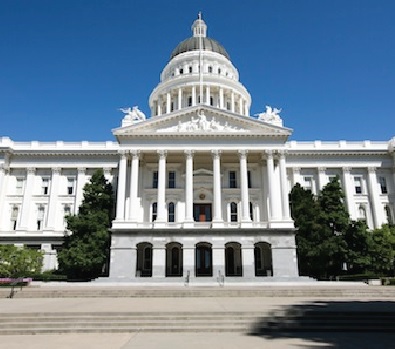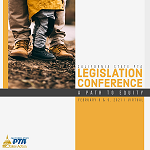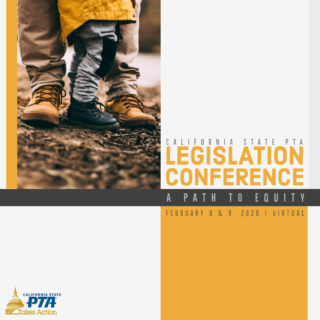 Education is primarily a state and local responsibility in the United States. It is states and communities, as well as public and private organizations of all kinds, that establish schools and colleges, develop curricula, and determine requirements for enrollment and graduation. The structure of education finance in America reflects this predominant state and local role. The result is that the Federal contribution to elementary and secondary education is just under 10%, which includes funds not only from the Department of Education (ED) but also from other Federal agencies, such as the Department of Health and Human Services’ Head Start program and the Department of Agriculture’s School Lunch program. These Federal programs are not affected by California’s Local Control Funding Formula.
Education is primarily a state and local responsibility in the United States. It is states and communities, as well as public and private organizations of all kinds, that establish schools and colleges, develop curricula, and determine requirements for enrollment and graduation. The structure of education finance in America reflects this predominant state and local role. The result is that the Federal contribution to elementary and secondary education is just under 10%, which includes funds not only from the Department of Education (ED) but also from other Federal agencies, such as the Department of Health and Human Services’ Head Start program and the Department of Agriculture’s School Lunch program. These Federal programs are not affected by California’s Local Control Funding Formula.
History of Federal involvement in Education
The Supreme Court’s 1954 Brown v. Board of Education decision mandated the desegregation of public schools and gave the executive branch a legal precedent for enforcing equal access to education.
The Elementary and Secondary Education Act (ESEA) of 1965 was a key part of Lyndon Johnson’s War on Poverty and has set the basic terms of the federal government’s involvement in education ever since. Rather than mandating direct federal oversight of schools, ESEA offered states funding for education programs on a conditional basis. In other words, states could receive federal funding provided they met the requirements outlined in certain sections, or titles, of the act. Every major education initiative since then has been about recalibrating the balance first struck by ESEA. Until 1980, the program was reauthorized every three years, each time with more specific guidelines about how federal funds were to be used.
In 1975, the Education for All Handicapped Children Act (now IDEA) ensured that students with disabilities are provided a free appropriate public education to meet their needs.
In 1979, the Federal Department of Education was established as a separate, cabinet-level government agency that would coordinate the federal government’s various initiatives and requirements. In the years since, we have had ESEA reauthorizations such as No Child Left Behind and Every Student Succeeds Act.
In addition to ESEA, the Federal government continues to administer other programs, including two large ones that tend to get less attention; child nutrition and Head Start.
The National School Lunch Program (NSLP) provides nutritionally balanced, low-cost or no-cost lunches to children each school day. This program has played an essential role during the COVID-19 pandemic. At a time of heightened food insecurity for so many families across our state and nation, this program has helped millions who may only get nutritious meals during the school day. The US Department of Agriculture recently announced the continued extension of nationwide flexibilities that allow free school meals for children throughout the entire 2020-2021 school year.
Head Start is a program of the United States Department of Health and Human Services that provides comprehensive early childhood education, health, nutrition, and parent involvement services to low-income children and families. This program is intended to halt the development of an achievement gap by promoting the school readiness of infants, toddlers, and preschool-aged children from low-income families.
If the Federal contribution to the California public school system is less than 10% of the overall budget for schools, why is it important for PTA to spend time on this now? Due to the pandemic, a large federal investment in education is needed in order to stave off major state and local budget cuts that would disproportionately affect our most vulnerable students.
Want to learn more?
 California State Board of Managers member and past Vice President of Education Mary Perry recently wrote an article for Ed100 entitled, “Are California Students Prepared for Citizenship?”
California State Board of Managers member and past Vice President of Education Mary Perry recently wrote an article for Ed100 entitled, “Are California Students Prepared for Citizenship?” “A Path to Equity” was the focus of this year’s Legislation Conference, which I attended as a local PTA leader and advocate, but also as the parent of two public high school students. Bringing equity to California public schools has long challenged our educational leaders, and the pandemic has highlighted vast inequities in the system and left millions of California students more disadvantaged than ever. From access to mental health care and meals to the widening of a vast digital divide, the conference underscored that the prospect of getting students back on track is daunting. Far from being pessimistic, however, the conference presented information and opportunities that we as parents and PTA advocates can use to disrupt ineffective old practices and bring public education into a new era in which all are included and empowered, and in which the needs of all are seen and addressed.
“A Path to Equity” was the focus of this year’s Legislation Conference, which I attended as a local PTA leader and advocate, but also as the parent of two public high school students. Bringing equity to California public schools has long challenged our educational leaders, and the pandemic has highlighted vast inequities in the system and left millions of California students more disadvantaged than ever. From access to mental health care and meals to the widening of a vast digital divide, the conference underscored that the prospect of getting students back on track is daunting. Far from being pessimistic, however, the conference presented information and opportunities that we as parents and PTA advocates can use to disrupt ineffective old practices and bring public education into a new era in which all are included and empowered, and in which the needs of all are seen and addressed. State Superintendent Tony Thurmond opened the conference and focused on restorative justice and increased digital access and literacy as examples of measures needed at the state level to increase inclusiveness and access for all students. President Celia Jaffe shared CAPTA’s ten recommendations for the timely and safe reopening of schools. Director of Legislation Shereen Walter shared CAPTA’s legislative agenda and the critical need for “our collective voices to influence legislation and the state budget to improve equity, access, and opportunity for all of California’s children.” Then, National PTA President-Elect Anna King shared her personal stories of witnessing how racial and economic inequities affected her own children, injustices which led directly to her involvement in PTA and her work to bring a collective voice on behalf of all children to our nation’s leaders and educational decision-makers. This was a powerful start to the conference.
State Superintendent Tony Thurmond opened the conference and focused on restorative justice and increased digital access and literacy as examples of measures needed at the state level to increase inclusiveness and access for all students. President Celia Jaffe shared CAPTA’s ten recommendations for the timely and safe reopening of schools. Director of Legislation Shereen Walter shared CAPTA’s legislative agenda and the critical need for “our collective voices to influence legislation and the state budget to improve equity, access, and opportunity for all of California’s children.” Then, National PTA President-Elect Anna King shared her personal stories of witnessing how racial and economic inequities affected her own children, injustices which led directly to her involvement in PTA and her work to bring a collective voice on behalf of all children to our nation’s leaders and educational decision-makers. This was a powerful start to the conference. Education is primarily a state and local responsibility in the United States. It is states and communities, as well as public and private organizations of all kinds, that establish schools and colleges, develop curricula, and determine requirements for enrollment and graduation. The structure of education finance in America reflects this predominant state and local role. The result is that the Federal contribution to elementary and secondary education is just under 10%, which includes funds not only from the Department of Education (ED) but also from other Federal agencies, such as the Department of Health and Human Services’ Head Start program and the Department of Agriculture’s School Lunch program. These Federal programs are not affected by California’s Local Control Funding Formula.
Education is primarily a state and local responsibility in the United States. It is states and communities, as well as public and private organizations of all kinds, that establish schools and colleges, develop curricula, and determine requirements for enrollment and graduation. The structure of education finance in America reflects this predominant state and local role. The result is that the Federal contribution to elementary and secondary education is just under 10%, which includes funds not only from the Department of Education (ED) but also from other Federal agencies, such as the Department of Health and Human Services’ Head Start program and the Department of Agriculture’s School Lunch program. These Federal programs are not affected by California’s Local Control Funding Formula. Have you considered attending Leg Con 2021, but are still on the fence? Well, here are five reasons that will convince you that attending is DEFINITELY worthwhile:
Have you considered attending Leg Con 2021, but are still on the fence? Well, here are five reasons that will convince you that attending is DEFINITELY worthwhile: